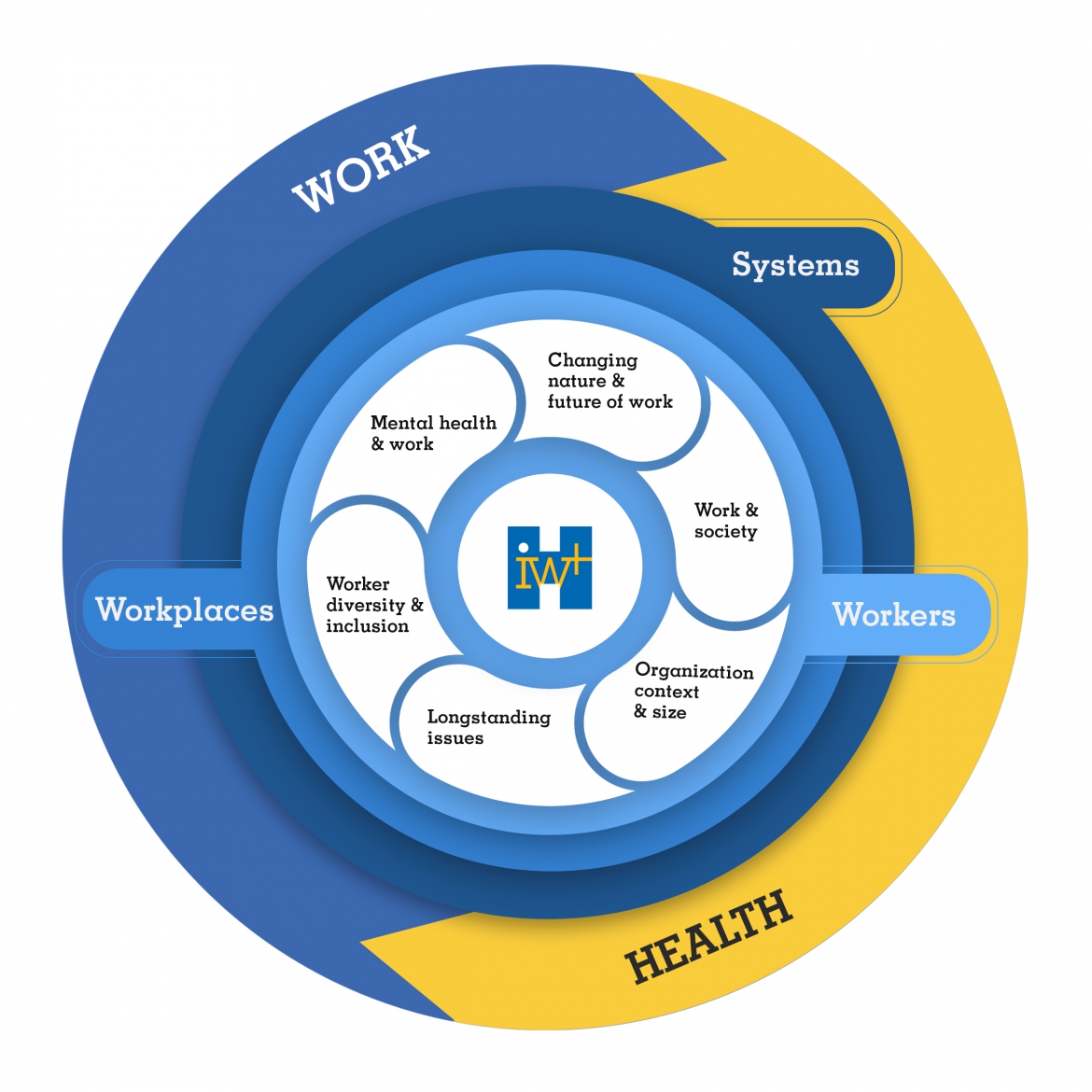Building on the past, looking to the future. This is the basis of the Institute for Work & Health (IWH)’s new five-year strategic plan, in which IWH sets out its goals to use the research expertise and partnerships it has built over the past 30 years to address current and increasingly complex work and health challenges.
It’s a balancing act. We need to continue to do what we’re known and respected for, which is to produce excellent, rigorous and meaningful research, while also being flexible enough to seize on opportunities for change and renewal,
says Dr. Peter Smith, President and Senior Scientist at IWH. We need to make sure we’re responding to new issues that arise over the next five years for which workers, workplaces, and policy-makers want answers.

This plan is the result of a year-long process involving consultations with IWH’s Board of Directors, senior representatives of IWH’s key partners and collaborators, IWH staff and IWH subscribers. It sets out four strategic directions that will act as a roadmap for IWH’s activities and partnerships.
Four strategic directions
The first direction is to advance the science of work and health by conducting excellent research on work and health topics, providing expert advice to improve program and policy design and strengthening the evaluation of interventions at both a system, workplace or worker level.
As part of this direction, IWH has also laid out priority areas of research where it will focus its efforts over the next five years. Within each of these priority areas we will continue to have a focus on the reciprocal relationships between work and health, and we will address these research questions at the worker level, the workplace level, and the systems level,
notes Smith.
The six research areas include:
- Changing nature and future of work
- Work and society
- Organization context and size
- Longstanding issues
- Worker diversity and inclusion
- Mental health and work

The second direction is to expand the reach and impact of IWH research by strengthening stakeholder networks, delivering evidence-based products and tools, and engaging in creative and strategic research dissemination. There are renewed opportunities for us to bring stakeholders together. As a neutral convener, we can bring together different perspectives around high-priority work and health issues, which can form the basis of new research activities as we move forward,
says Smith.
The third direction is to strengthen the work and health research ecosystem by mentoring the next generation of work and health researchers, improving data capacity and developing new research methods and measures to improve and accelerate work and health research.
The fourth direction is to ensure IWH itself is a safe and healthy workplace by implementing best practices for workplace health and safety, integrating diversity, equity, inclusion and accessibility principles throughout IWH and its research, and cultivate an environment of continuous growth and support for IWH workers.
With this new strategic plan,
Smith says, we’re excited to conduct innovative and rigorous research and engage in meaningful knowledge translation and exchange activities to address our mission of supporting policy-makers, employers and workers in creating healthy, safe and inclusive work environments.
To learn more about the research areas of focus, the four strategic directions and how IWH will measure its success at reaching these goals, read the full strategic plan.